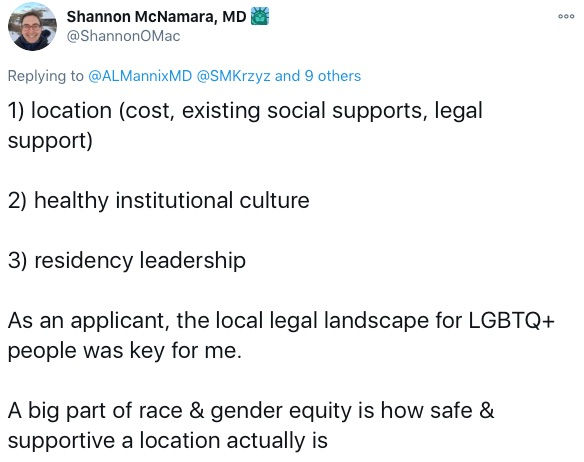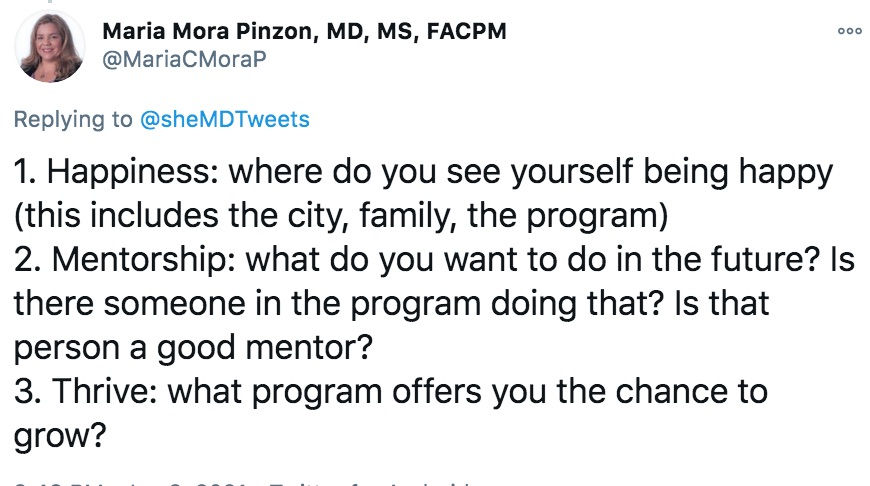Expert Advice on Making Your Rank List
- Jeanne Rabalais

- Feb 5, 2023
- 5 min read
By Jeanne Rabalais and Lexie Mannix, MD
Interview season is finally coming to an end and it’s time to make your rank list. Where to even start? First, it’s important to understand the logistics of the “rank list'' and some vital information in regards to the NRMP match process.

Once interviews are complete, applicants begin compiling their rank order list (ROL). This list includes the places the applicant has interviewed in which the applicant wishes to train. Applicants should rank programs in their preferred order (more on this to come). This list is submitted and certified through the NRMP Registration, Ranking, and Results (R3) system by no later than March 3, 2021 at 9:00am EST. The NRMP algorithm then uses the applicants’ lists, along with the programs’ lists, to place applicants into residency positions.
So, how does one create their rank order list? We asked some EXPERTS in medical education (Current or previous Program Directors and Clerkship Directors.) Below is their summary of recommendations! We recognize that each person will value different factors more heavily, but we hope this will help get you started!
Dr. Abby Spencer starts us off with a fantastic list of things to consider when making your rank list.
While Dr. Liz Lee offers a few other things to consider.
We received lots of great feedback from experts, so we decided to break the comments into the following categories: Fit, Geography, Training Environment, Leadership, Career Planning, and Special Factors.
Fit.
The number one thing brought up by our experts was the word “FIT”. Fit is a difficult concept to define, but really it comes down to “is this place right for me”
Dr. Jennifer Caputo-Seidler defines fit as the alignment of the people and your professional goals.
Dr. Jennifer Mitzman agrees with Dr. Caputo-Seidler- she tells us you will get great training almost anywhere. She recommends you think about the people and the community.
Dr. Kat Ogle brings up how “fit” is different for everyone.
Dr. Kristy Schwartz tells us to listen to our gut!
Geography.
Like the old real estate adage “Location. Location. Location.” For some people, geography is a vital component of their rationale for rank list order.
Dr. Marjorie Stiegler brings the fact that you will be living here for 3+ years. She recommends you consider if you really want to live there!
Dr. Shannon McNamara reminds us that location isn’t just about geography!
Training environment.
Countless experts brought up the importance of considering a training environment. Some physicians recommended considering the diversity of the patient population and patient volumes. Also, the availability of specialists can be a factor for some (do you want an unopposed residency or would you rather work at a big tertiary referral center?). The facilities may also impact your decision making- what resources exist at the hospitals? Do I have to travel to other hospitals/cities for rotations? Do I want to work at multiple hospitals during training?
Dr. Barbara Hamilton reminds us that the training environment might be the most important factor for some applicants.
Leadership.
Almost every expert brought up the importance of looking at the leadership when ranking residency programs. Look for a place with a committed and caring Program Director and Associate/Assistant Program Directors. Find a program that is committed to the education, mentorship, development, and career building of their residents.
Student Doctor Jazmyn Shaw brought up the importance of both clinical and professional development.
Dr. Maria Mora Pinzon reminds us to think about mentorship when creating a rank list.
Career Planning.
What do you want to do AFTER training? Some experts recommended looking at where graduates go after residency (fellowship vs general practice). Do these career trajectories match up with your career plan.
Dr. Michael Gisondi brings up the importance of alumni jobs.
Special Factors.
Some individuals may have some additional factors that they consider when creating their rank list.
This is especially important for applicants who identify as Underrepresented in Medicine (UIM) and/or LGBTQ+ .
Dr. Anita Chary encourages us to ask “Do you see faculty or residents who look like you?” and “What is the make-up of the other students on interview day?”

Dr. Shannon McNamara brings up the importance of selecting a program in a state with legal protection, as well as a hospital system that supports LGBTQ+ physicians and their partners.

Here is the HRC State Score card: https://www.hrc.org/resources/state-scorecards
TAKE HOME POINTS
When creating a rank order list, consider the 4 Ps: People, Place, Patients, and Perception. We will break these down below.
People.
When looking at the people that comprise a program, there are several things to take into account. In regards to program leadership, make note of their commitment to education, mentorship, development, and career building. Make sure the program leadership will foster your clinical, professional, and personal development. When it comes to the residents, observe their level of happiness, and most importantly is their happiness based on factors that will make you happy. Look at where the residents go post-graduation (fellowships, general practice, locations of those practices) and imagine yourself following in their footsteps.
Place.
Things to consider when looking at the geographic region include proximity to family or to an airport to access family, availability of recreational activities, and cost of living. It is also important to consider the facility itself. Considerations include: facility resources, availability of specialists, and the ability to accommodate all rotations in-house (or at least in the same city).
Patients.
Consider what patient populations you want to be working with. Did you go into medicine to work with the underserved? Do you absolutely love working with very complicated transplant patients? What part of patient care makes you the happiest and makes you excited to come to work? Find a place that has those patients!
Perception.
How do you feel about the program when reading information on their website? How did you feel immediately after the interview? Can your mom/ significant other/ friend sense your excitement about the program? Basically, this is your gut feeling about the program. Also, how is this program perceived nationally. Do they have graduates where you want to be or doing what you want to do?
With the COVID-19 Pandemic, making a rank list poses more challenges than ever. You quite possibly will be ranking programs in locations where you have never visited and at types of hospitals you have never rotated. This year more than ever, applicants must do their due diligence in researching programs. Program leadership and current residents know the extra challenges this year has and want to help you make the right decision for you. Reach out to them! Ask those questions that might seem silly. Ultimately, this is about YOU and finding your residency home!
At the end of the day, remember that it will be OK. It is OK if you don’t match at your number one or don’t match at all (see- Not Matching and Moving on).
Dr. Harriet Hopf reminds us that you can have a successful and fulfilling career no matter what!
This post contains affiliate links. SheMD will make a commission at no extra cost to you should you click the link and make a purchase. Read our disclosure for more info.

















شيخ روحاني
رقم شيخ روحاني
الشيخ الروحاني
الشيخ الروحاني
شيخ روحاني سعودي
رقم شيخ روحاني
شيخ روحاني مضمون
Berlinintim
Berlin Intim
جلب الحبيب
https://www.eljnoub.com/
https://hurenberlin.com/
For those with an interest in lodging vocations, marine catering colleges in Tamilnadu there are various ways of sticking out and upgrade both your present moment and long haul possibilities. Whether you are simply beginning, or keeping watch inn the executives position, there are dependably things you can do to support your possibilities getting the work you need.
Este 12 meses, di "¡frases de feliz cumpleaños!" con una tarjeta personalizada y unas frases que nadie pasará por alto. Ya sea que esté buscando un saludo para hacer que una persona se ría a carcajadas o una lágrima conmovedora, esas tarifas de cumpleaños son una región excelente para comenzar. Encuentra una cita o mensaje que funcione para ti y adáptate a lo saludable.
With such a lot of customization on offer at Firehouse Subs, you have some control over your garnishes and how much protein, carbs, menu prices and dairy in your request. Furthermore, with the convenient intuitive sustenance and allergen menu, you understand what you are eating and can avoid any food allergens. Partaking in your number one subs is simple when you're ready to completely redo the protein, garnishes, and wholesome substance of your feast.
Visiting their site will permit you to see the range of administrations in plain view. They have arranged every one of their administrations to make it youtube reseller panel simpler to find the assistance you are searching for. They guarantee fast conveyance of the entirety of their administrations. These robotized administrations are conveyed inside the space of seconds making them a dependable choice.